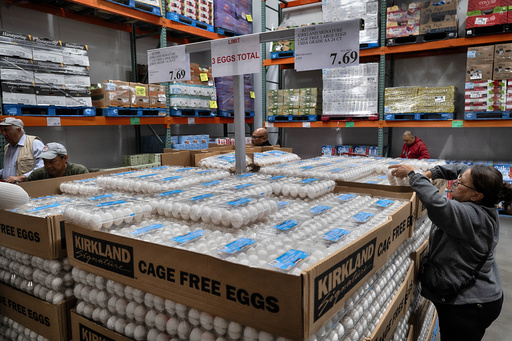The U.S. Department of Agriculture (USDA) has projected a significant rise in egg prices by more than 40% come 2025. This announcement coincided with the Trump administration revealing details surrounding its strategy to combat bird flu and alleviate egg prices.
The focal point of this plan centers around enhancing farm biosecurity measures.
Agriculture Secretary Brooke Rollins declared an additional $1 billion investment in tackling bird flu, atop the $2 billion already allocated since the outbreak’s inception in 2022. While the specifics of keeping the virus at bay are unclear, existing measures, such as mandatory clothing changes for farmworkers and stringent hygiene protocols, are still insufficient to prevent virus spread through migrating wild birds.
The egg market has been severely affected as over 166 million birds, primarily egg-laying hens, have been culled to control the virus spread.
This drastic measure spurred egg prices to soar, reaching a record-breaking $4.95 per dozen, mainly attributed to January’s extreme losses of 19 million hens.
The USDA forecasts a 41% surge in egg prices for this year alone, far exceeding previous estimates.
The impact is palpable, with consumers in some regions shelling out over a dollar per egg and restaurants like Denny’s and Waffle House imposing surcharges on egg-based dishes.
The University of Arkansas estimates the cost of these elevated egg prices to have drained consumers by at least $1.4 billion last year.
Agriculture Secretary Rollins indicated that the administration’s efforts would eventually curb egg prices, albeit with a delay.
Post-outbreak farm recovery processes, including carcass disposal and rearing new flocks, prolong this timeline.
Nonetheless, Rollins hopes to see some relief by the summer.
Concerns have been raised about USDA’s capacity to combat bird flu amidst potential workforce cutbacks instigated by the Department of Government Efficiency.
However, Rollins assured that the department possesses necessary resources.
This redirection includes evaluating staff allocation and budget expenditures.
The strategic investment plan allocates $500 million to intensify biosecurity, $400 million to bolster aid for flu-impacted farms, and $100 million for vaccine research and the development of therapeutic solutions.
Discussions to import 70 million to 100 million eggs are underway, yet current U.S. production figures suggest that such imports may not significantly impact the domestic market.
While vaccines could potentially mitigate culling rates during outbreaks, such solutions are yet to be approved or deemed viable, particularly due to logistical constraints like the need for individual bird inoculations.
The National Turkey Federation commended the government’s plan but emphasized the importance of supporting all poultry farmers across the sector, not solely egg producers.




